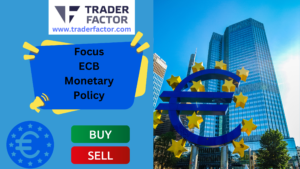Hello traders and investors. I am Radi Valov, a professional trader, and today I would like to make a quick update to my commodities analysis of Gold and Silver.
Anyone who wants to can trace my previous commodities analysis of Gold and Silver with larger and older time frames can see them below:
14.03.2020: Elliott waves trading idea for Gold and Silver safe assets UPDATE
28.02.2022: Elliot Waves trading idea for Gold, Silver, and Gdx
14.02.2022: Elliott waves signal for Gold update
07.02.2022: Elliott waves signal for Silver
04.02.2022: Elliott waves signal for Gold
Let’s start with the gold trading chart.
Gold Daily Chart

After reaching the top in the area of 2070, a downward movement for wave (ii) develops. At the moment, the fall has a structure of completed zigzag to the bottom in the area of 1890. Most likely this zigzag is only part of the wave (ii), and not the whole correction, so I put? it on the chart. The structure of the correction allows this week to see another two upward movements to the area around 1980-2030, followed by a new downward movement that will find support in the area around 1850 for the end of wave (ii).
Silver Weekly Chart

The two metals are currently in a fairly good correlation. The situation is similar to silver. From the top, for wave (i) we have a completed triple down with a zigzag correction structure to the bottom in the area of 24,400. Then began the development of lateral upward movement, which is more likely a wave b / x. I expect to see another rise to around 25,900 this week, followed by another downward movement, which will find support in around 23,900 for the end of wave (ii).
Buy and Sell over 250 crypto derivatives with ultra-low spreads

Understanding Elliott Wave Theory: A Guide for Traders
Elliott Wave Theory, developed by Ralph Nelson Elliott in the 1930s, is a powerful analytical tool used by traders to forecast market trends by identifying extremes in investor psychology, highs and lows in prices, and other collective factors.
What is Elliott Wave Theory?
Elliott Wave Theory is based on the belief that markets move in repetitive cycles, influenced by mass psychology. These market cycles, or ‘waves’, reveal the recurrence of specific behaviors caused by changing investor sentiment.
The theory identifies two types of waves: Impulse Waves and Corrective Waves. Impulse Waves consist of five sub-waves that set the direction of the market trend – up or down. The Corrective Waves, on the other hand, consist of three sub-waves that counter the primary trend.
The Basic Structure of Elliott Waves
- Impulse Waves: These are typically composed of five smaller waves. In a bull market, waves 1, 3, and 5 are ‘up’ waves, moving with the trend, while waves 2 and 4 are ‘down’ waves, moving against the trend.
- Corrective Waves: These consist of three smaller waves. In a bull market, wave A is a ‘down’ wave, wave B is an ‘up’ wave, and wave C is a ‘down’ wave again.
It’s important to note that each of these waves can be broken down into a five-wave pattern. For instance, in an uptrend, wave 1, 3, and 5 would break down into five smaller waves, and wave 2 and 4 would break down into three smaller waves.
Application of Elliott Wave Theory in Trading
Elliott Wave Theory can be a powerful trading strategy if understood and implemented correctly. Here’s how traders often use it:
- Identifying Trend Reversals: By recognizing the end of an impulse wave, traders can predict a short-term trend reversal.
- Setting Stop-loss and Take-profit Points: Traders can set their stop-loss just beyond the point where they believe a wave will end. Similarly, they can set take-profit points at the anticipated end of a wave.
- Risk Management: By understanding the wave patterns, traders can manage their risk better. For instance, if a trader believes that the market is in the corrective phase, they might choose to reduce their position size or tighten their stop loss.
Limitations of Elliott Wave Theory
While Elliott Wave Theory can be a useful tool for traders, it’s not without its limitations. The theory relies heavily on accurate identification of waves, which can often be subjective. Misidentifying a wave can lead to incorrect forecasts and potential trading losses.
Additionally, Elliott Wave Theory doesn’t consider external market factors like news events, which can have a significant impact on market trends.
Conclusion
Elliott Wave Theory offers a unique perspective on market cycles, providing traders with insights into trend direction, potential reversals, and key trading points. Like any trading strategy, it should be used in conjunction with other tools and strategies to confirm signals and manage risk effectively. As always, successful trading involves careful planning, discipline, and continual learning.
###
All information has been prepared by TraderFactor or partners. The information does not contain a record of TraderFactor or partner’s prices or an offer of or solicitation for a transaction in any financial instrument. No representation or warranty is given as to the accuracy or completeness of this information. Any material provided does not have regard to the specific investment objective and financial situation of any person who may read it. Past performance is not a reliable indicator of future performance.




















